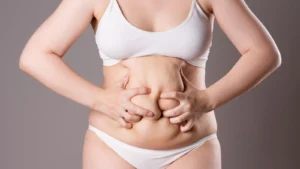Neurosurgery is one of the most complex and sensitive fields of medicine. The complex structure and vital importance of the human brain causes every procedure performed in this field to require great care and precision. In recent years, with the rapid development of technology, significant progress has been made in the field of neurosurgery. In this article, we will examine in detail the new technologies used in neurosurgery and their impact on patient care.
-
Robotic Surgery Systems
Robotic surgery is one of the technologies revolutionizing neurosurgery. These systems increase the precision and control of the surgeon's hands, while also allowing more complex operations to be performed through smaller incisions.
Robotic systems, such as the Da Vinci Surgical System, allow the surgeon to perform surgery with a three-dimensional, high-resolution image. The surgeon controls robotic arms while sitting at a console. These arms have a greater range of motion than the human hand and eliminate tremors.
Advantages of robotic surgery:
- Smaller incisions
- Less blood loss
- Shorter hospital stay
- Faster recovery
- Less pain
However, robotic surgery also has some disadvantages. The high cost and long training process are factors that limit the widespread use of this technology.
-
Intraoperative MRI
Intraoperative MRI (iMRI) is a technology that allows real-time MRI images to be taken during surgery. This technology is particularly useful in the removal of brain tumors.
In traditional methods, the surgeon finishes the surgery after removing the tumor and the patient then undergoes an MRI scan. If part of the tumor remains, a second surgery may be necessary. With iMRI, the surgeon can check during surgery whether the tumor has been completely removed and, if necessary, perform additional interventions in the same session.
Advantages of iMRI:
- More precise tumor removal
- Less need for reoperation
- Better patient outcomes
However, iMRI systems are quite expensive and require specially designed operating rooms. Therefore, they may not be available in every hospital.
-
Navigation Systems
Neuronavigation systems work in a similar way to GPS technology. These systems match MRI or CT images taken before surgery with real-time images during surgery. This provides the surgeon with a 3D map of the brain and shows the location of critical structures.
Neuronavigation systems are particularly useful in reaching deep brain structures and removing small lesions. They are also used in the surgical planning phase and help determine the safest and most effective approach.
Advantages:
- More precise surgical intervention
- Reduced risk of brain damage
- Smaller incisions
-
Laser Ablation Technology
Laser ablation is a minimally invasive technique used to treat brain tumors and foci of epilepsy. In this method, a small puncture is made and a laser probe is inserted into the brain. The probe applies high-intensity laser energy to the tumor or epilepsy focus, destroying the tissue.
Advantages of laser ablation:
- Minimally invasive
- Fast recovery time
- Reduced risk of complications
This technology is particularly useful in treating lesions in deep brain structures where conventional surgery is risky.
-
Augmented Reality (AR) ve Virtual Reality (VR)
AR and VR technologies have started to be used in neurosurgery in both training and surgery planning stages.
VR allows surgeons to simulate complex cases before surgery. This ensures surgeon preparedness, especially in rare or complex cases.
AR can be used during surgery. Through special glasses, the surgeon can see a 3D image of the patient's brain in real time. This helps to pinpoint the position of critical structures and perform more precise surgical interventions.
-
High Intensity Focused Ultrasound (HIFU)
HIFU is a non-invasive technology used in neurosurgery. In this method, high-intensity sound waves are used to create heat in the brain tissue and destroy the target tissue.
The most important advantage of HIFU is that it requires no incisions. This reduces the risk of infection and shortens the recovery time. It is especially used in the treatment of movement disorders such as essential tremor and Parkinson's disease.
-
Optogenetics
Optogenetics is a promising new technology for the treatment of neurological diseases. In this method, certain groups of neurons are genetically modified to become photosensitive. These neurons can then be activated or inhibited using light.
This technology is still in the experimental phase, but has great potential in the treatment of epilepsy, Parkinson's disease and other neurological disorders.
-
Artificial Intelligence and Machine Learning
Artificial intelligence (AI) and machine learning are increasingly used in neurosurgery. These technologies can be used for image analysis, surgical planning and even decision-making during surgery.
AI algorithms can detect tumors and other abnormalities by analyzing MRI and CT scans. This enables early detection and more precise surgical planning.
By analyzing large data sets, machine learning algorithms can help identify the best treatment methods for specific patient groups.
-
Brain-Computer Interfaces
Brain-computer interfaces (BCI) are systems that transmit brain signals directly to computers or other electronic devices. This technology allows paralyzed patients to control or communicate with prosthetic limbs.
BCI technology is still in its infancy, but it has great potential in treating neurological diseases and improving quality of life.
-
3D Printing Technology
3D printing technology is used in neurosurgery for both training and surgery planning. By printing a 3D model of the patient's brain, surgeons can study complex cases before surgery and plan the best approach.
Furthermore, 3D printing technology can also be used to produce customized implants. This is particularly beneficial in procedures such as skull reconstruction.
Conclusion
Technological advances in neurosurgery play a major role in improving patients' quality of life and treating conditions that were previously considered untreatable. These new technologies provide more precise diagnosis, less invasive surgical methods and better patient outcomes.
However, many of these technologies are still under development and their long-term impact is not yet fully known. Moreover, access to these technologies is not open to everyone due to their high cost.
In the future, these technologies are expected to develop further and become more widespread. Advances in artificial intelligence and robotics will make neurosurgery even more precise and effective.
In conclusion, technological advances in neurosurgery offer exciting opportunities for both patients and surgeons. However, caution is needed regarding the ethical use and accessibility of these technologies. No matter how far technology advances, the human factor at the heart of neurosurgery - the surgeon's experience, skill and judgment - will always be critical.
























